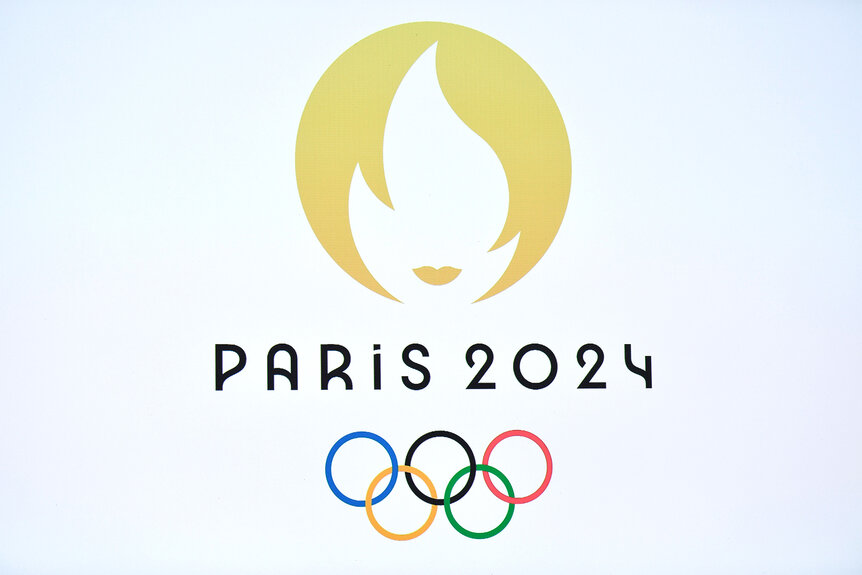Create a free profile to get unlimited access to exclusive show news, updates, and more!
The Meaning Behind the Olympic Rings and How the Iconic Logo Came to Fruition
Five rings and six colors tell a storied history of the Games, the timeless legacy of competition in sports, and a world yearning to embrace unity.
Whether it’s the cursive script in Coca-Cola, Michael Jordan’s “Jumpman” silhouette for Nike, or a cozy pair of bright, golden arches, beckoning you to a savory future of burgers and fries, you don’t have to be a rocket scientist to understand that iconic brands often possess iconic logos. It’s a symbiotic relationship toward the path of success, one that has the power to feed both the real and intangible values of the other as an impactful, easily recognizable moniker means elevated visibility and instant identification for that brand. The two don’t go together quite as easily peanut butter and jelly, but it’s close.
Still, even amidst a sea of corporate juggernauts, burgeoning conglomerations and hot disruptors, not all logos are created equally. Flashy visuals might support some enterprises, but sometimes, to truly reach and appeal to the broadest range of demographics, something else is needed: meaning. Embodying something deeper, like a core set of ideals or a mission statement, brings a resonant gravitas to a brand’s messaging that helps it stand the test of time and, as we continue to march in lockstep excitedly toward the 2024 Summer Games in Paris, France, nothing stands the test of time quite like the five interlocked rings that make up the Olympic logo.
RELATED: Everything to Know About the 2024 Paris Olympic Village
Why are there 5 rings in the Olympic logo?
The logo was originally designed and hand-drawn in 1913 by educator and historian Charles Pierre de Frédy, Baron de Coubertin, known as the founding father of the modern Olympic Games and co-founder of the International Olympic Committee (IOC), created in 1894. The Olympic symbol was originally designed by the Frenchman to feature the now legendary five rings as a way to pay tribute to the Games’ participants and the five regions of the world — Australia, Africa, Americas, Europe, and Asia — that the athletes came from.
Following the epic conclusion of World War I, a period that left the nations of the world fractured and disillusioned, the legendary symbol was hoisted for the first time during the 1920 Summer Olympics in Antwerp, Belgium to a resounding success.
“These five rings represent the five parts of the world now won over to the cause of Olympism and ready to accept its fecund rivalries,” wrote De Coubertin.
And it’s a cause that, deep in its core, carries significant weight, especially for those who participate in the Games, because no matter the event at hand, Olympic activities are intrinsically developed to embrace a culture of education and sportsmanship — crucial tenets that De Coubertin saw as means to shape a better world.
“When I see the five rings, it’s kind of like a goosebump feeling,” said Flora Duffy, who became Bermuda’s first gold medalist when she took home the top prize at the 2020 Tokyo Games in the triathlon event. “I suppose I think about how it’s uniting people all over the world that come to one place and are striving to be their best selves.”
She continued, “It’s kind of like this beautiful moment that these rings can create.”
RELATED: How Many Olympic Sports Are There? See a Complete List for the 2024 Summer Games
Colors in the Olympic Rings
After Charles Pierre de Frédy, Baron de Coubertin, landed on the five-ring design for the official Olympic flag as a way to pay homage to the geographical regions that were embracing the competitive spirit and beliefs that are integral to the Olympic Games, completing the now legendary emblem meant devising a suitable color scheme and, for De Coubertin, the significance of the colors needed to match the set of ideals that the five interlocked rings represented. Thus, the Paris-born Frenchman chose to shade the rings each with its own color, and the colors that were chosen — from left to right, blue, yellow, black, green, red and the white background — to represent "the colours of the flags of all nations at that time, without exception," according to Olympics.com.
“What is more, the six colors thus combined reproduce those of all nations without exception,” wrote De Coubertin.
It goes without saying that De Coubertin’s mission in creating the Olympic symbol was a success unlike any other. The ever-lasting logo and its immensely powerful, inherent meaning became a brilliant, enduring beacon of hope and strength during its inaugural run at the 1920 Olympic Games in Antwerp, Belgium, signaling to all of the approximately 2,626 athletes from 29 countries that they were, indeed, welcome.
Featuring five interlaced rings each of a different color with three rings on top and two below, differing opinions exist today about the exact themes contained in the symbol, but no matter which of the seven versions you’re looking at, the legendary emblem is meant to inspire excellence while embracing unity and inclusion.







